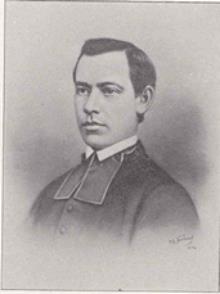Great Famine Voices Roadshow coming to the United States and Canada
FIRST GREAT IRISH FAMINE VOICES ROADSHOW TOURING THE USA AND CANADA
Bringing together Irish emigrants and descendants during the Great Famine of Ireland
http://www.strokestownpark.ie/great-famine-voices-roadshow/
The Great Famine Voices Roadshow will be launched in New York on 9th April at the American Irish Historical Society. The Great Famine Voices Roadshow is a series of open house events in the United States and Canada that bring together Irish emigrants, their descendants, and members of their communities to share family memories and stories of coming from Ireland to North America, especially during the period of the Great Hunger and afterwards.

“We are excited about meeting people during the Great Famine Voices Roadshow and hearing their family stories about how their ancestors came from Ireland to start new lives in the United States,” declared Christine Kinealy, Director of Ireland’s Great Hunger Institute at Quinnipiac University, Connecticut. “We hope that people of Irish heritage in Canada will come to the Roadshow to share their family memories,” added Professor Mark McGowan from the University of Toronto.
“This Roadshow will provide a unique opportunity for Irish-Americans and Irish-Canadians to share their stories, strengthen their sense of ancestry, and historical and current Irish connections. All are welcome to these events”, said Caroilin Callery, a Director of the National Famine Museum in Strokestown Park, Ireland. “Over the past few years, we have been in search of stories from ‘the next Parish’ in North America, where so many of those who survived the Great Hunger – the biggest catastrophe of 19th century Europe – made new lives. We need to hear these stories,” she continued.
A selection of these family memories and stories will be made freely available on the Great Famine Voices online archive. www.greatfaminevoices.ie
The Great Famine Voices Roadshow in the USA and Canada will be hosted by the National Famine Museum at Strokestown Park, Ireland, and the Irish Heritage Trust, an independent charity. The Roadshow will be held in partnership with Ireland’s Great Hunger Institute at Quinnipiac University, the American Irish Historical Society, and the University of Toronto. It is funded by the Government of Ireland Emigrant Support Programme.
DETAILS OF ROADSHOW VENUES – All Welcome to these Free Open House Events.
April 9th: American Irish Historical Society, 991 Fifth Avenue, New York (launch)
April 11th 4pm-8.30pm: Burns Library, Boston College, 140 Commonwealth Avenue, Chestnut Hill
April 13th, 11am-4pm: Glucksman Ireland House, 1 Washington Mews, New York University
April 15th, 1pm-4:30pm: Parkway Central Library, 1901 Vine Street, Philadelphia.
April 17th, 11am-3pm: Knights of Columbus Museum, 1 State Street, New Haven, Connecticut.
May 22nd, 5-9pm: Madden Hall, St. Michael’s College, 81 St. Mary Street, University of Toronto.
May 27th, 10am-5pm: St. Gabriel’s Church, 2157 Centre Street (and Walk to the Stone), Montreal.

For media inquiries in the USA, contact: Turlough McConnell at tm@turloughmcconnell.com or Elizabeth Martin (917) 873-6613 ekm@turloughmconnell.com
For queries, or if you would like to contribute a family memory or story online, contact Dr Jason King at the Irish Heritage Trust: faminestudies@irishheritagetrust.ie
http://www.strokestownpark.ie/great-famine-voices-roadshow/














